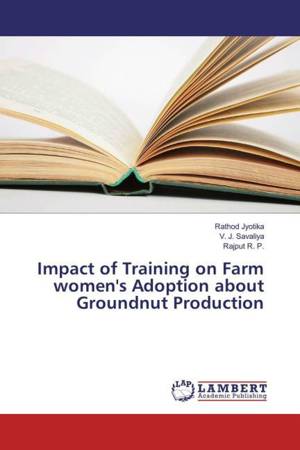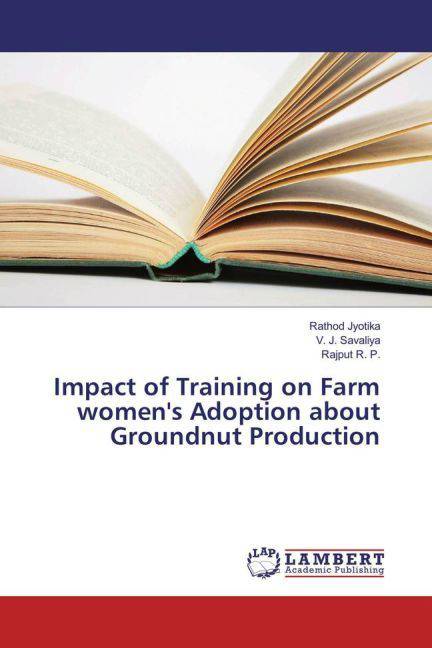
- Afhalen na 1 uur in een winkel met voorraad
- Gratis thuislevering in België vanaf € 30
- Ruim aanbod met 7 miljoen producten
- Afhalen na 1 uur in een winkel met voorraad
- Gratis thuislevering in België vanaf € 30
- Ruim aanbod met 7 miljoen producten
Zoeken
Impact of Training on Farm women's Adoption about Groundnut Production
Rathod Jyotika, V. J. Savaliya, Rajput R. P.
Paperback | Engels
€ 49,45
+ 98 punten
Omschrijving
"One cannot think of agriculture without women". Women are the main architecture of farming. They work shoulder to shoulder with men-folk in the fields in scorching sun and under pouring rain. The rural women are observed during their actual performance of farm activities from time of raise to the time of retiring to bed at night. The largest numbers of working women in India are engaged in farming operations either as cultivators or as agricultural labors. There is still confusion about the extent of role women play in agricultural management and how much labour and time they put in farm activities. It has now been realized that if agricultural production is to be increased the most important step that need to be taken is the training of farm women in improved methods of farming. It can be very useful to the policy makers and the executors of the organizations to frame out the future programmes or to modifying it, according to the results of training programme regarding its impact.
Specificaties
Betrokkenen
- Auteur(s):
- Uitgeverij:
Inhoud
- Aantal bladzijden:
- 96
- Taal:
- Engels
Eigenschappen
- Productcode (EAN):
- 9783659902697
- Uitvoering:
- Paperback
- Afmetingen:
- 150 mm x 220 mm

Alleen bij Standaard Boekhandel
+ 98 punten op je klantenkaart van Standaard Boekhandel
Beoordelingen
We publiceren alleen reviews die voldoen aan de voorwaarden voor reviews. Bekijk onze voorwaarden voor reviews.








